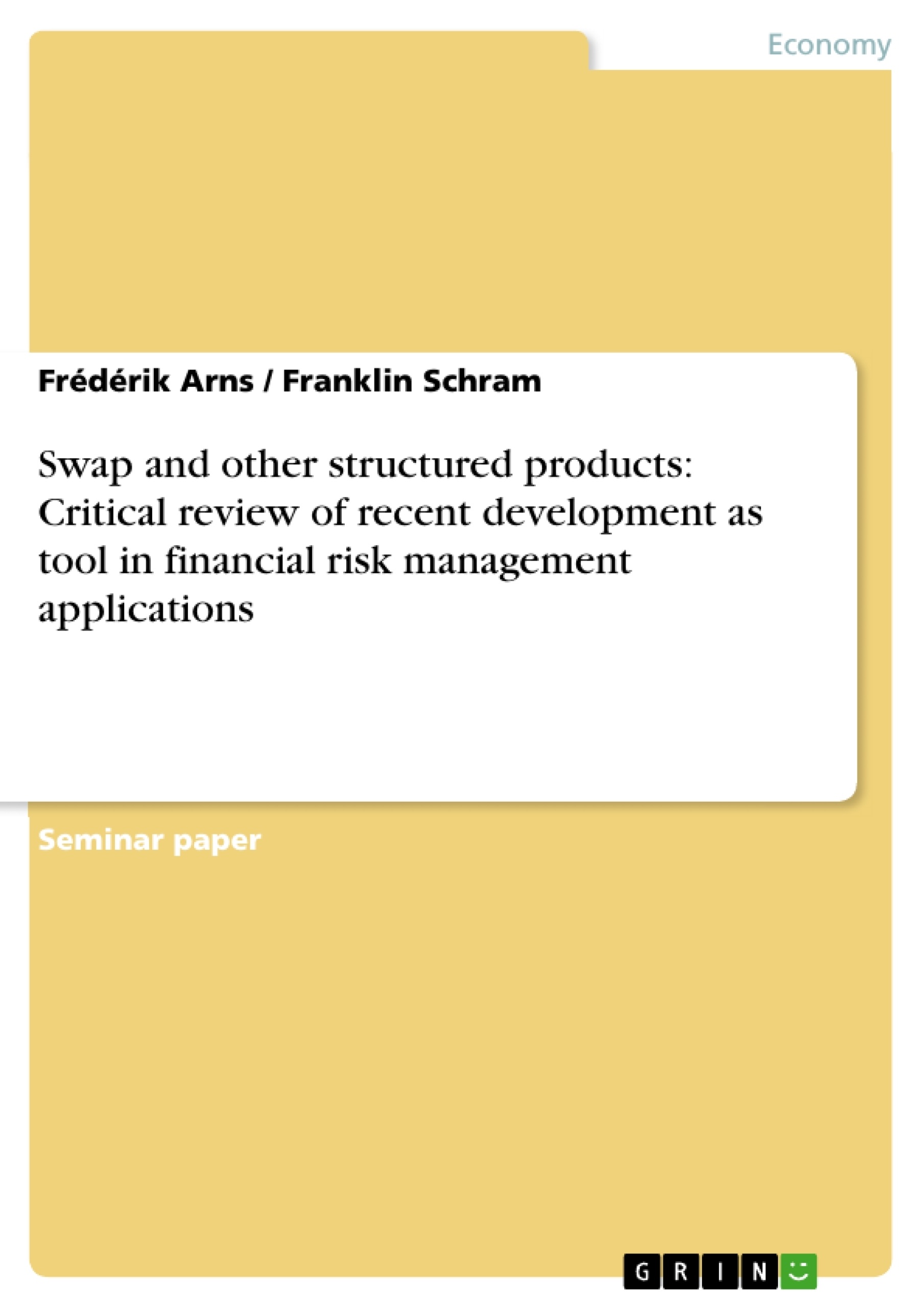The increased volatility in the financial products world has raised concern about new
possibilities of Risk Management leading into increased use of structured products. Credit
derivatives are financial instruments to manage risk. They isolate such risk from the
underlying financial asset. This essay, firstly, is going to examine
the impact on swap products as a tool in Risk Management followed by an examination of
key areas in structured products development that have experienced the strongest growth in
the last decade. For both types, the current theory and pricing will be outlined
followed by a demonstration of some characteristic applications in Financial Risk
Management.
Inhaltsverzeichnis (Table of Contents)
- Introduction
- Swap Products
- The Interest rate Swap
- The Currency Swap
- The Credit Default Swap
- General Developments in the Swap Market
- Structured Products: Concepts and Strategy
- Invested Principal Protection Strategies
- Principal Protected Strategy
- Cushioned Principal Strategy
- Principal Exposure Strategy
- Yield Generation
- Equity linked Products
- Interest-linked Products
- Invested Principal Protection Strategies
- Structured instrument pricing issues
- Main developments in structured products
- The role of individual investors
- The role of corporate debtors
- Conclusion
Zielsetzung und Themenschwerpunkte (Objectives and Key Themes)
This essay aims to examine the role of swap products and structured products in financial risk management. It explores how these instruments have evolved and developed as tools for mitigating risk in the financial markets.
- The impact of swap products on risk management
- Key areas of structured product development
- Theoretical frameworks and pricing models for swaps and structured products
- Applications of these financial instruments in risk management
- The role of different market participants in utilizing these products
Zusammenfassung der Kapitel (Chapter Summaries)
- Introduction: Introduces the essay's focus on the use of swap products and structured products in managing financial risk, highlighting their growing importance in a volatile market.
- Swap Products: Defines swaps as agreements for future cash flow exchanges, emphasizing the development of the market from parallel loan agreements in the 1980s. It delves into three main swap categories: interest rate swaps, currency swaps, and credit default swaps, exploring their theoretical foundations and pricing models.
- The Interest rate Swap: Explains how interest rate swaps can be used to reduce interest rate risk. It discusses four theoretical explanations for their existence: asymmetric information, agency cost theory, comparative advantage, and expected future downsizing.
- The Currency Swap: Discusses the origins and growth of the currency swap market, emphasizing its role in managing foreign exchange exposure for global firms. The pricing of currency swaps is explained, drawing parallels with interest rate swaps.
- The Credit Default Swap: Defines credit default swaps as instruments offering protection against credit defaults, outlining their structure and pricing. It addresses the rapid growth of the CDS market and explores the challenges associated with pricing.
- General Developments in the Swap Market: Highlights recent trends in the swap market, specifically the increasing use of UK inflation swaps driven by pension fund investments.
Schlüsselwörter (Keywords)
The primary focus of this essay lies on the development and application of swap products and structured products in financial risk management. Key terms include interest rate swaps, currency swaps, credit default swaps, structured products, risk management, pricing models, theoretical frameworks, and the role of different market participants.
- Citation du texte
- Frédérik Arns (Auteur), Franklin Schram (Auteur), 2006, Swap and other structured products: Critical review of recent development as tool in financial risk management applications, Munich, GRIN Verlag, https://www.grin.com/document/57496



